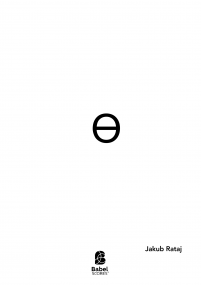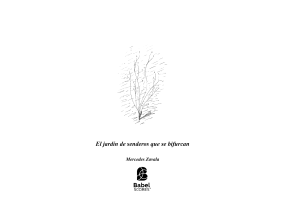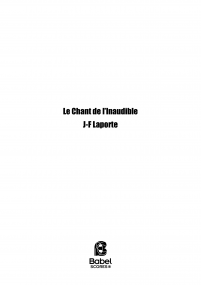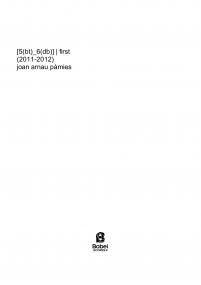Recherche avancée
Vacuum Corporis
for two pianos
(film)
ISMN : 979-0-2325-3351-3
- Identifiez-vous pour créer une liste
optar, para merecer o equilíbrio final que a própria catástrofe implica."
Miguel Torga, in Diário (1944)
Vacuum corporis (body's emptiness), hominem te esse memento (remember that you are a human being): two pianos (side by side) with a musical mixed discourse intersected with the projected film - pno 1 has the 'main' material 'walking' against the tide and pno 2 is trying to cease the fluidity and freedom with a 'mechanic' material in a continuous motion, joining sometimes pno 1.
The basic idea lies on two main thoughts that work as sources of the inspirational impulse: firstly, the mechanical behavior of human 'shaped' beings accepting everything without a critical thought; secondly, and resulting from the previous attitude (mentioned in the quotation used in the piece's introduction from Diário, 1944, by the Portuguese writer Miguel Torga), the existence of human beings without 'intelligence', 'instinct' or 'personality', always choosing a spectator's role during their existence.
Apart from these inspirational thoughts, it must be mentioned not only the photos taken by the composer and well-known photographers (Lisette Model, Harry Callahan, among others), capturing streets' ambience, people walking with a posture, gesture and purpose, mixing different situations, movements, gestures, feelings, but also the research done by the film's author, Daniel Antero, influenced by Akira Kurosawa (incongruity between stillness of central motifs and the opposite movement in the background; the force of nature as a metaphor), by Noh theatre ('orchestration' of movements with unexpected elements) and by cyber punk (neurosis, unpredictable synapses, the alienation of movement, a body with spasms injected with information).
All these sources work also as intervenient elements mixed with the musical discourse, ending up in a cohesive and interactive 'speech' (projected images, performance issues dealing not only the musical discourse but also the stage plan and details attached to it, etc.) which place this creation in the so-called Transversal Multi Art .
Pianists
Pages - 82







